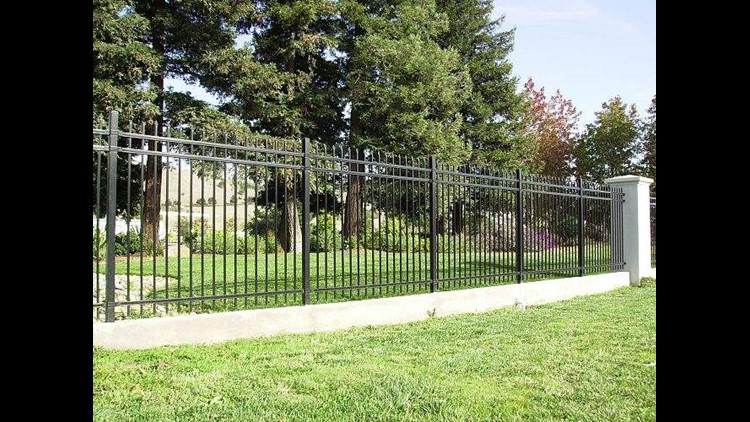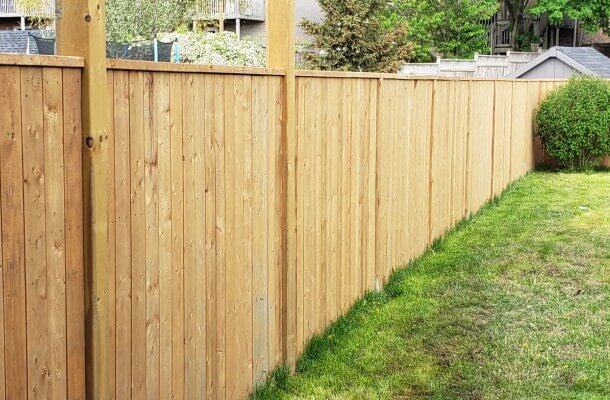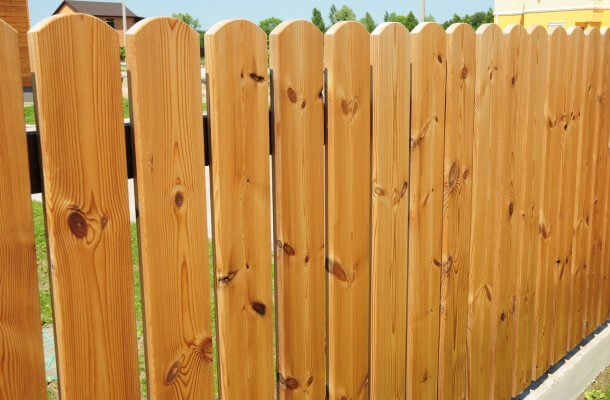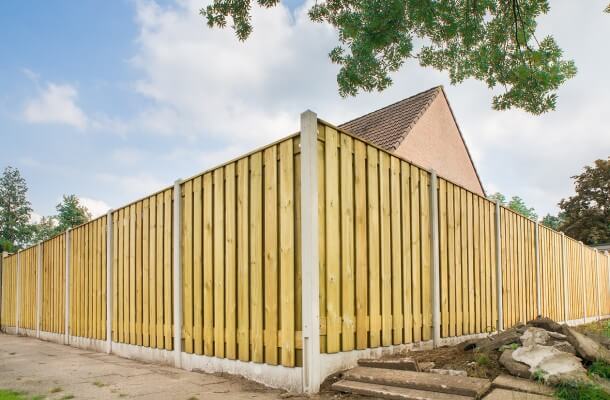Fences are a common fixture in many residential areas, helping homeowners demarcate their property lines and add privacy.
However, local governments often regulate the height and materials permitted for fence construction through municipal codes and ordinances. This helps maintain neighborhood aesthetics, safety, and harmony between residents.
For homeowners and property owners in Wichita Falls, Texas, it’s important to understand the city’s rules regarding fence height restrictions before installing or replacing a fence.
Having a fence that exceeds the legal height limitations can result in fines, forced removal, and other issues.
In this comprehensive guide, we’ll examine Wichita Falls’ fence ordinances to answer the question: Are there height restrictions for fences in Wichita Falls, TX?
We’ll look at the current regulations for different fence types and locations, as well as the reasons behind these municipal rules.
Whether you’re planning a new fence installation or wondering if your existing fence meets city code, this guide will outline everything you need to know about fence height regulations in Wichita Falls.
Overview of Fence Height Regulations in Wichita Falls
The city of Wichita Falls has specific limitations on the maximum allowable height for new residential and commercial fences. These regulations are outlined in the city’s municipal codes under Chapter 6, Article II – Fences.
In general, the highest permitted fence height within residential areas is 8 feet. However, depending on the fence location and type, some residential fences are restricted to shorter maximum heights. For commercial properties and in industrial areas, the regulations differ.
Some of the key fence height restrictions outlined in the Wichita Falls code include:
- Front yard fences cannot exceed 4 feet in height
- Fences beside the front half of the house cannot top 4 feet
- Fences in rear and side yards (behind the midpoint of the house) cannot exceed 8 feet
- Boundary line fences between two residential lots max out at 8 feet
- Commercial districts permit up to 8 foot tall perimeter fences with some exceptions
The city code also defines how the fence height is measured—from the top of the fence section to the ground below. Posts and supporting framework can extend up to 18 inches higher than the fence itself.
There are also exceptions for specific fence types like barbed wire and electric fences, which have further limitations. The full municipal code outlines all applicable rules governing fence heights across different Wichita Falls properties.

Why Fence Heights Are Regulated
Most cities regulate the maximum height of residential and commercial fences for several important reasons:
Maintaining Visibility and Safety
Tall privacy fences that fully obstruct views can create blind corners and hiding places that pose risks to safety. Restricting front yard fence heights helps maintain visibility for passing pedestrians and vehicles.
Shorter fences at house fronts and on corner lots allow for better sight lines at intersections and driveways where accidents are more likely.
Allowing Light and Air Flow
Excessively high fences can block natural light from reaching neighboring properties. They also interrupt air flow which helps ventilation and circulation in residential areas. Regulating height limits helps prevent overly blocked off properties and maintains better ambient conditions.
Noise Reduction
Solid, tall perimeter fences can reflect and amplify sounds from neighboring homes or businesses. Regulating height limits prevents excessively blocked off properties which can worsen neighborhood noise.
Protecting Aesthetics and Property Values
Consistent fence heights help provide a uniform look within residential communities. Really tall privacy fences are more likely to look unsightly and fall into disrepair.
This can negatively impact surrounding property values. Reasonable height restrictions help maintain attractive, harmonious neighborhoods.
Resolving Disputes
Clear fence ordinances prevent disagreements between property owners over appropriate heights. With defined limits, code enforcement can resolve disputes and determine whether a fence complies with city regulations.
Height Regulations for Different Fence Types
Wichita Falls’ municipal code allows several common types of fences but regulates their heights based on location and construction. Here are the height restrictions based on the most typical fencing options:
Wood, Chain Link, and Metal Fences
The standard wood, chain link, and metal fence constructions are permitted in rear, side, and front yards. Front yard fences and those along the front half of homes max out at 4 feet tall. Fences along rear and side lot lines behind the house midpoint can be up to 8 feet.
Boundary line fences cannot exceed 8 feet. On corner lots, fences by the street side yard cannot obstruct visibility over 3 feet tall within 25 feet of the intersection.
Wrought Iron/Ornamental Metal
Wrought iron and ornamental metal fences have the same basic height limits. However, front yard fences up to 6 feet may be permitted if they allow for 70% visibility along their length. This helps maintain visibility and safety while allowing for decorative metal fence designs.
Masonry and Brick Walls
For solid masonry fences and brick walls, the height limit along front and side streets is 3 feet. In rear yards and along interior lot lines behind the house, they can reach 8 feet maximum. Masonry columns can extend up to 36 inches above the fence height.
Electric Fences
Electric fences typically used for animal control are heavily restricted in residential areas of Wichita Falls. They cannot exceed 2 feet tall and must have warning signs every 50 feet.
Barbed Wire Fences
Barbed wire fences pose safety risks, so they are prohibited for residential use in Wichita Falls. Limited use may be permitted on agricultural and commercial sites of over 5 acres after getting a permit.
Height Allowances for Commercial and Industrial Fences
Fence regulations differ for commercial properties and industrial areas in Wichita Falls. The limits aim to balance security, visibility, and aesthetics:
- Perimeter fences around commercial and industrial property can be up to 8 feet tall. Support posts may extend up to 2 feet higher.
- If the property abuts a residential area, the side and rear yard fence heights are reduced to 7 feet maximum.
- Commercial fences over 4 feet tall cannot be located inside required setbacks from the street.
- Industrial sites have fewer restrictions but barbed wire is only permitted on top of 6+ foot tall fences.
As with residential fences, the heights are lowered near street intersections and driveways to preserve visibility. Gates, entry arbors, and fence sections around equipment like HVAC units may exceed standard fence heights with proper permitting.

Obtaining Permits for Taller Backyard Fences
Homeowners who want to exceed the typical residential fence height limits for privacy or other reasons can apply for a special permit. These permits are considered for rear and side yard fences on a case-by-case basis.
To apply for a residential fence height exemption permit, homeowners must submit:
- A completed permit application with property details and fence specifications
- A site plan showing the proposed fence location
- Elevation drawings showing the fence height and design
- The applicable permit fee
If the permit is approved after review, the homeowner will need to send notification to surrounding neighbors. Fence height permits are issued at the discretion of the chief building official based on factors like:
- Proximity to neighbors and potential impact
- Visibility and traffic safety issues
- Justification of need for increased height
- Aesthetics and materials used in fence design
Permitted taller backyard fences typically cannot exceed 10 feet in height in single family residential areas. Approvals for excess height are rare, but the permit process offers a legal avenue for homeowners who wish to request an exception.
What Happens If You Violate the Fence Height Limits?
Constructing a fence over the height restrictions without a permit is considered a violation of Wichita Falls’ city ordinances. If a complaint is filed, code enforcement will investigate and take action which may include:
- Issuing citations and fines to the homeowner
- Demanding modification or removal of the fence to conform to code
- Obtaining a court order to compel fence height reduction
- Removing the fence and charging the homeowner for abatement costs
Code violations for fence heights over 8 feet can result in fines of up to $2,000 per day. Continued noncompliance after getting a notice of violation can lead to criminal misdemeanor charges.
It’s important for homeowners to verify their fence height complies, get a permit for any exemptions, and avoid installation violations to prevent enforcement actions.
Consulting the municipal code, city planning department, and qualified fencing contractors is recommended.
Key Takeaways on Fence Height Regulations in Wichita Falls
The major points to keep in mind about Wichita Falls’ fence height restrictions include:
- Front yard fences cannot exceed 4 feet tall without a special permit
- Fences along the front half of homes max out at 4 feet
- Rear and side yard fences behind the house midpoint may be up to 8 feet tall
- Boundary line fences in residential areas also limit out at 8 feet
- Commercial district perimeter fences may be up to 8 feet tall
- Special permits can be requested for taller backyard fences over 8 feet
- Violating the height codes can result in citations, fines, and fence removal
Understanding the municipal fence ordinances is crucial before installing a new fence. Homeowners should research the property line locations, applicable heights, and permit needs. Following the Wichita Falls guidelines helps maintain positive neighborhood aesthetics, safety, and order across the community.
Checking the city planning department’s website for the most up-to-date fence codes is recommended, as ordinances are subject to change. With proper planning and compliance, homeowners can construct fences that meet their needs while adhering to the height regulations enforced in Wichita Falls.
Common Questions about Fence Heights in Wichita Falls (With Answers)
Many homeowners have questions about interpreting Wichita Falls’ fence ordinances and how the height limits apply to their property. Here are answers to some of the most frequently asked questions:
Q: Do I need a permit to install a fence on my property?
A: A permit is not needed for standard fences under 8 feet tall that comply with code. But variances, commercial fences, or heights over 8 feet require approved permits before installation.
Q: My home is on a slope. How is fence height measured on a grade?
A: Fence height is measured from the highest ground level on either side of the fence line. Builders must conform to maximum heights along the entire length based on the tallest grade level.
Q: Can I have a 6 foot fence along my property line in the backyard?
A: Yes, rear and side yard fences behind the midpoint of the home can be up to 8 feet tall per city code. So a 6 foot boundary fence would meet requirements.
Q: What if my neighbor’s existing fence is over 8 feet tall?
A: Adjacent existing fences over 8 feet built under previous ordinances may stand. But any replacement, extension, or new fence construction must conform to current height codes.
Q: Can I install a taller fence to block noise from an adjacent business?
A: Residential height limits still apply. You may be able to apply for a special permit for a taller noise barrier fence over 8 feet, but approvals are not guaranteed.
Q: Do alleyway fences have different height restrictions?
A: No, the same rear/side yard residential fence height limit of 8 feet applies to fences along alley property lines too.
Q: If a utility pole is situated along my fence line, how does that impact the height?
A: The base of the fence must start at ground level, but allowances are made to accommodate passing under overhead utility lines safely.
Conclusion
Fence height limits are an important consideration for Wichita Falls residents seeking to build boundaries, add privacy, or replace existing fences. The city’s municipal codes establish reasonable height restrictions to balance homeowners’ needs, safety, neighborhood character, visibility, and more.
While front yard fences are limited to just 4 feet tall, the ability to build up to 8 foot rear and side yard fences still allows for plenty of privacy and enclosure. Homeowners should review the complete fence ordinances and measure carefully to ensure any new construction complies.
Obtaining proper permits, avoiding unauthorized excess heights, and maintaining permitted fences in good repair will help avoid issues with code enforcement. With the right information and careful planning, homeowners can successfully navigate Wichita Falls’ fence height regulations.



